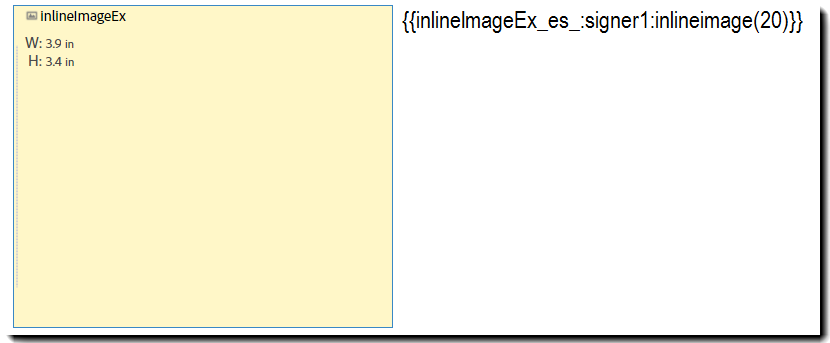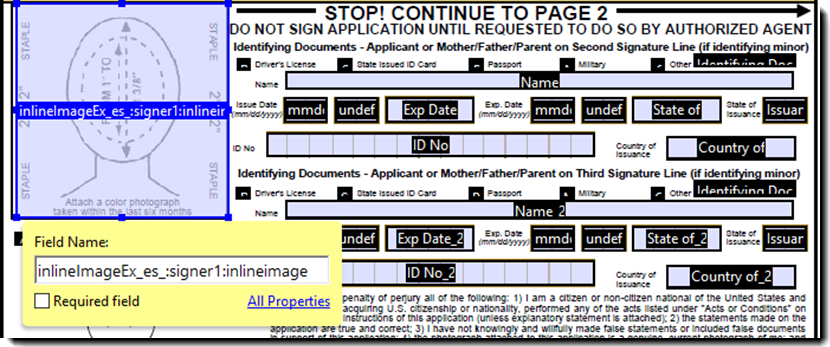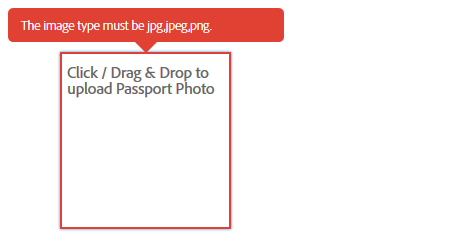What's New
Get Started
- Quick start guide for administrators
- Quick start guide for users
- For Developers
- Video tutorial library
- FAQ
Administer
- Admin Console Overview
- User Management
- Add, edit, and review active users
- Create function-focused users
- Review users who haven't completed verification
- Check for users with provisioning errors
- Change Name/Email Address
- Edit a user's group membership
- Edit a user's group membership through the group interface
- Promote a user to an admin role
- User Identity Types and SSO
- Switch User Identity
- Authenticate Users with MS Azure
- Authenticate Users with Google Federation
- Product Profiles
- Login Experience
- Account/Group Settings
- Settings Overview
- Global Settings
- Account tier and ID
- New Recipient Experience
- Self Signing Workflows
- Send in Bulk
- Web Forms
- Custom Send Workflows
- Power Automate Workflows
- Library Documents
- Collect form data with agreements
- Limited Document Visibility
- Attach a PDF copy of the signed agreement
- Include a link in the email
- Include an image in the email
- Files attached to email will be named as
- Attach audit reports to documents
- Merge multiple documents into one
- Download individual documents
- Upload a signed document
- Delegation for users in my account
- Allow external recipients to delegate
- Authority to sign
- Authority to send
- Power to add Electronic Seals
- Set a default time zone
- Set a default date format
- Users in Multiple Groups (UMG)
- Group Administrator Permissions
- Replace recipient
- Audit Report
- Transaction Footer
- In Product Messaging and Guidance
- Accessible PDFs
- New authoring experience
- Healthcare customer
- Account Setup / Branding Settings
- Signature Preferences
- Well formatted signatures
- Allow recipients to sign by
- Signers can change their name
- Allow recipients to use their saved signature
- Custom Terms of Use and Consumer Disclosure
- Navigate recipients through form fields
- Restart agreement workflow
- Decline to sign
- Allow Stamps workflows
- Require signers to provide their Title or Company
- Allow signers to print and place a written signature
- Show messages when e-signing
- Require signers to use a mobile device to create their signature
- Request IP address from signers
- Exclude company name and title from participation stamps
- Apply Adaptive Signature Draw scaling
- Digital Signatures
- Overview
- Download and sign with Acrobat /content/help/en/sign/config/admin-managed-sharing.
- Sign with Cloud Signatures
- Include metadata for Identity Providers
- Restricted Cloud Signatures Providers
- Electronic Seals
- Digital Identity
- Report Settings
- New report experience
- Classic report settings
- Security Settings
- Single Sign-on settings
- Remember-me settings
- Login password policy
- Login password strength
- Web session duration
- PDF encryption type
- API
- User and group info access
- Allowed IP Ranges
- Account Sharing
- Account sharing permissions
- Agreement sharing controls
- Signer identity verification
- Agreement signing password
- Document password strength
- Block signers by Geolocation
- Phone Authentication
- Knowledge-Based Authentication (KBA)
- Allow page extraction
- Document link expiration
- Upload a client certificate for webhooks/callbacks
- Timestamp
- Send Settings
- Show Send page after login
- Agreement creation experiences
- Require recipient name when sending
- Lock name values for known users
- Allowed recipient roles
- Allow e-Witnesses
- Recipient groups
- CCs
- Required fields
- Attaching documents
- Field flattening
- Modify Agreements
- Agreement name
- Languages
- Private messages
- Allowed signature types
- Reminders
- Signed document password protection
- Send Agreement Notification through
- Signer identification options
- Content Protection
- Enable Notarize transactions
- Document Expiration
- Preview, position signatures, and add fields
- Signing order
- Liquid mode
- Custom workflow controls
- Upload options for the e-sign page
- Post-sign confirmation URL redirect
- Restrict access to shared agreements
- Show Send page after login
- Message Templates
- Bio-Pharma Settings
- Workflow Integration
- Notarization Settings
- Payments Integration
- Signer Messaging
- SAML Settings
- SAML Configuration
- Install Microsoft Active Directory Federation Service
- Install Okta
- Install OneLogin
- Install Oracle Identity Federation
- SAML Configuration
- Data Governance
- Time Stamp Settings
- External Archive
- Account Languages
- Email Settings
- Migrating from echosign.com to adobesign.com
- Configure Options for Recipients
- Guidance for regulatory requirements
- Accessibility
- HIPAA
- GDPR
- 21 CFR part 11 and EudraLex Annex 11
- Healthcare customers
- IVES support
- "Vaulting" agreements
- EU/UK considerations
- Download Agreements in Bulk
- Claim your domain
- Report Abuse links
- System Requirements and Limitations
Send, Sign, and Manage Agreements
- Recipient Options
- Cancel an email reminder
- Options on the e-signing page
- Overview of the e-sign page
- Open to read the agreement without fields
- Decline to sign an agreement
- Delegate signing authority
- Restart the agreement
- Download a PDF of the agreement
- View the agreement history
- View the agreement messages
- Convert from an electronic to a written signature
- Convert from a written to an electronic signature
- Navigate the form fields
- Clear the data from the form fields
- E-sign page magnification and navigation
- Change the language used in the agreement tools and information
- Review the Legal Notices
- Adjust Acrobat Sign Cookie Preferences
- Send Agreements
- Send (Compose) page
- Overview of landmarks and features
- Group selector
- Adding files and templates
- Agreement name
- Global Message
- Completion Deadline
- Reminders
- Password protect the PDF
- Signature type
- Locale for the recipient
- Recipient signature order/flow
- Recipient roles
- Recipient authentication
- Private message for the recipient
- Recipient agreement access
- CC'd parties
- Identity check
- Send an agreement only to yourself
- Send an agreement to others
- Written Signatures
- Recipient signing order
- Send in Bulk
- Send (Compose) page
- Authoring fields into documents
- In-app authoring environment
- Create forms with text tags
- Create forms using Acrobat (AcroForms)
- Fields
- Field types
- Common field types
- E-signature fields
- Initials field
- Recipient name field
- Recipient email field
- Date of signing field
- Text field
- Date field
- Number field
- Checkbox
- Checkbox group
- Radio button
- Drop-down menu
- Link overlay
- Payment field
- Attachments
- Participation stamp
- Transaction number
- Image
- Company
- Title
- Stamp
- Field content appearance
- Field validations
- Masked fields values
- Setting show/hide conditions
- Calculated fields
- Field types
- Authoring FAQ
- Sign Agreements
- Manage Agreements
- Manage page overview
- Delegate agreements
- Replace Recipients
- Limit Document Visibility
- Cancel an Agreement
- Create new reminders
- Review reminders
- Cancel a reminder
- Access Power Automate flows
- More Actions...
- How search works
- View an agreement
- Create a template from an agreement
- Hide/Unhide agreements from view
- Upload a signed agreement
- Modify a sent agreement's files and fields
- Edit a recipient's authentication method
- Add or modify an expiration date
- Add a Note to the agreement
- Share an individual agreement
- Unshare an agreement
- Download an individual agreement
- Download the individual files of an agreement
- Download the Audit Report of an agreement
- Download the field content of an agreement
- Audit Report
- Reporting and Data exports
- Overview
- Grant users access to reporting
- Report charts
- Data Exports
- Rename a report/export
- Duplicate a report/export
- Schedule a report/export
- Delete a report/export
- Check Transaction Usage
Advanced Agreement Capabilities and Workflows
- Webforms
- Reusable Templates (Library templates)
- Transfer ownership of web forms and library templates
- Power Automate Workflows
- Overview of the Power Automate integration and included entitlements
- Enable the Power Automate integration
- In-Context Actions on the Manage page
- Track Power Automate usage
- Create a new flow (Examples)
- Triggers used for flows
- Importing flows from outside Acrobat Sign
- Manage flows
- Edit flows
- Share flows
- Disable or Enable flows
- Delete flows
- Useful Templates
- Administrator only
- Agreement archival
- Webform agreement archival
- Save completed web form documents to SharePoint Library
- Save completed web form documents to OneDrive for Business
- Save completed documents to Google Drive
- Save completed web form documents to Box
- Agreement data extraction
- Agreement notifications
- Send custom email notifications with your agreement contents and signed agreement
- Get your Adobe Acrobat Sign notifications in a Teams Channel
- Get your Adobe Acrobat Sign notifications in Slack
- Get your Adobe Acrobat Sign notifications in Webex
- Agreement generation
- Generate document from Power App form and Word template, send for signature
- Generate agreement from Word template in OneDrive, and get signature
- Generate agreement for selected Excel row, send for review and signature
- Custom Send workflows
- Share users and agreements
Integrate with other products
- Acrobat Sign integrations overview
- Acrobat Sign for Salesforce
- Acrobat Sign for Microsoft
- Other Integrations
- Partner managed integrations
- How to obtain an integration key
Acrobat Sign Developer
- REST APIs
- Webhooks
- Sandbox
Support and Troubleshooting
In-line Image fields are available to business and enterprise service levels.
Feature Description
Adobe Acrobat Sign supports uploading an image file into a place holder field that is defined by the Sender. This image is captured in the document like other form fields and exists as an extractable file that the Sender can later use:
- Universities can request student images to they can be identified/verified during orientation/testing.
- Real estate forms that require images of both the buyer and seller to be attached
- Hiring processes that demand an image of documents (ID, Social Security cards, etc.)
The In-line Image field can be added to any form using the drag and drop Authoring environment, normal Text Tags, or Acrobat created PDF forms.
- In-line images are only supported in the New Send environment.
- Senders that are using the Classic Send page will be re-directed to the New Send page if they upload a document using the in-line image text tags.
- Templates that use in-line images will not be available in the classic page template list
How it’s used
For Senders, In-line Images can be added to templates by placing them using the Authoring environment, the use of Text Tags, or editing the name of a text field when building a form in Acrobat.
Image fields work like other field types:
- Multiple unique Image fields are permitted
- Image fields can be cloned and placed in multiple places, allowing field pollination.
- Image fields can be assigned to any recipient role that can interact with fields, including Prefill
- Image fields are included in reporting, and return a URL that points to the originally uploaded image file
Currently, the In-line Image object can only accept a .png or .jpg/.jpeg file.
Using Drag and Drop Authoring
Placing Image fields on a document is best done in the Authoring environment because you have precise control of the field footprint. For highly regulated images like a passport photo, this can be a big deal.
In Authoring, you will find the Image object in the Data Fields section.
The image field is anchored at the top left corner, and is adjustable by "grabbing" the bottom right corner and dragging the field to the desired width and height.
The final image size is expressed within the Image field.


Text Tag Syntax
The In-line Image Text Tag is uncommon as the tag must specify a height for the placeholder that is greater than the font used to create the tag (which is how field height is normally determined).
The argument to create an In-line Image is :inlineimage(X)
Where X is the number of lines to be added to the field height.
The height of a "line" is determined by the font size used to create the tag.
For example: {{inlineImageEx_es_:signer1:inlineimage(4)}} : height of field = 4 lines
Below is an example of the text tag on the right, and the resulting field on the left.


Keep in mind that the tag anchors the top of the field, and the number of lines added will extend below the line where the tag is described.
This makes precision field sizing somewhat difficult, so if you need to have a precise field size, you may need to adjust the field in Authoring before saving the template or sending the Agreement.
Building forms in Acrobat
Adding an In-line Image when building your forms in Acrobat requires that you insert the Text Tag syntax into the Name property of a text field (minus the braces on each end).
This hybrid approach does two useful things:
- The size and shape of the text field you place on the form will be respected when the document is generated in Acrobat Sign. This is helpful in assuring your field fits properly into the space allocated without guessing to the number of lines that must be added.
- The arguments added to the text tag will be respected. This means you can use Showif/Hideif arguments, as well as most other common Text Tag arguments.


When placing a field, no argument will alter the size and shape of the field. If you include any number of lines in the text tag syntax, they will be ignored, and the field size will remain how you have explicitly placed it.
How Recipients interact with the field
Recipients will upload their images by Drag and Drop. Any size image will be accepted, and automatically stretched or compressed to fit into the field borders.
Once the image is in place, a large X will be visible in the upper right corner of the field. Clicking this will delete the image from the field and return it to its original state.


In-line Image fields will only accept .png, .jpg, and .jpeg files.
If a different file type is attempted, an error will be prompted:


Useful Tips...
:label()
The :label() argument is particularly useful with the In-line Image field, allowing you to provide a more meaningful instruction to the recipient.
The value passed by :label() will show up in the field during authoring (instead of the field name), and will append to the end of the default instruction.
Below is an example of an Image field in the Authoring environment including
:label("Passport Photo")


This is the view for the recipient during the Signing experience.
Note that the Click / Drag & Drop to upload string cannot be edited.


Adjusting the Measurement Unit
The default unit of measure in the application is inches (in), but can readily be changed to centimeters by the User for their personal use.


Individual users can make this change on their Profile page by hovering over their name in the top right of the window, selecting My Profile, and then clicking Edit to open the profile in edit mode.
Change the unit to the desired standard, and click Save


Administrators can request that the default be changed at the Account or Group level by contacting Acrobat Sign Support.
Changing the unit of measurement will apply to all increments of measure that are displayed in the application, not just in Image fields.
Extracting the Images
In-line Images can be "extracted" from the form through the Reporting function.
For Senders
- Navigate to the Manage tab, find the agreement with the image you need, and select it with a single click
- On the far right of the window, click the History tab.
- Click the Export Data link


A CSV will download to your browser.
- Open the CSV file (in Excel for most people, but whatever application you use to view CSV files will be used)
- Find the header indicating the Image field. The field name is used in the CSV header
- The contents of the cell will be a URL pointing to the graphic file.
- Copy and paste that URL into any browser
- The graphic file will be downloaded to your browser


For Admins
The direct URLs to the graphic file are protected at the User level, and is only available to the Sender of the Agreement through the Export Data link.
Admins that access field content by running Reports will not see a URL. Instead, they will see the raw documentID of the file, and they can extract it using the API.


The downloaded graphic will be the same as the originally uploaded graphic.
Any adjustments made to the image when fitting it to the field footprint are reflected only in the field. The actual graphic file is never edited.
How to enable/disable
In-line Images are available to business and enterprise levels of service by default. No additional configuration is needed to expose this field type.
If you would like to disable this feature at the Account or Group level, contact Acrobat Sign Support.